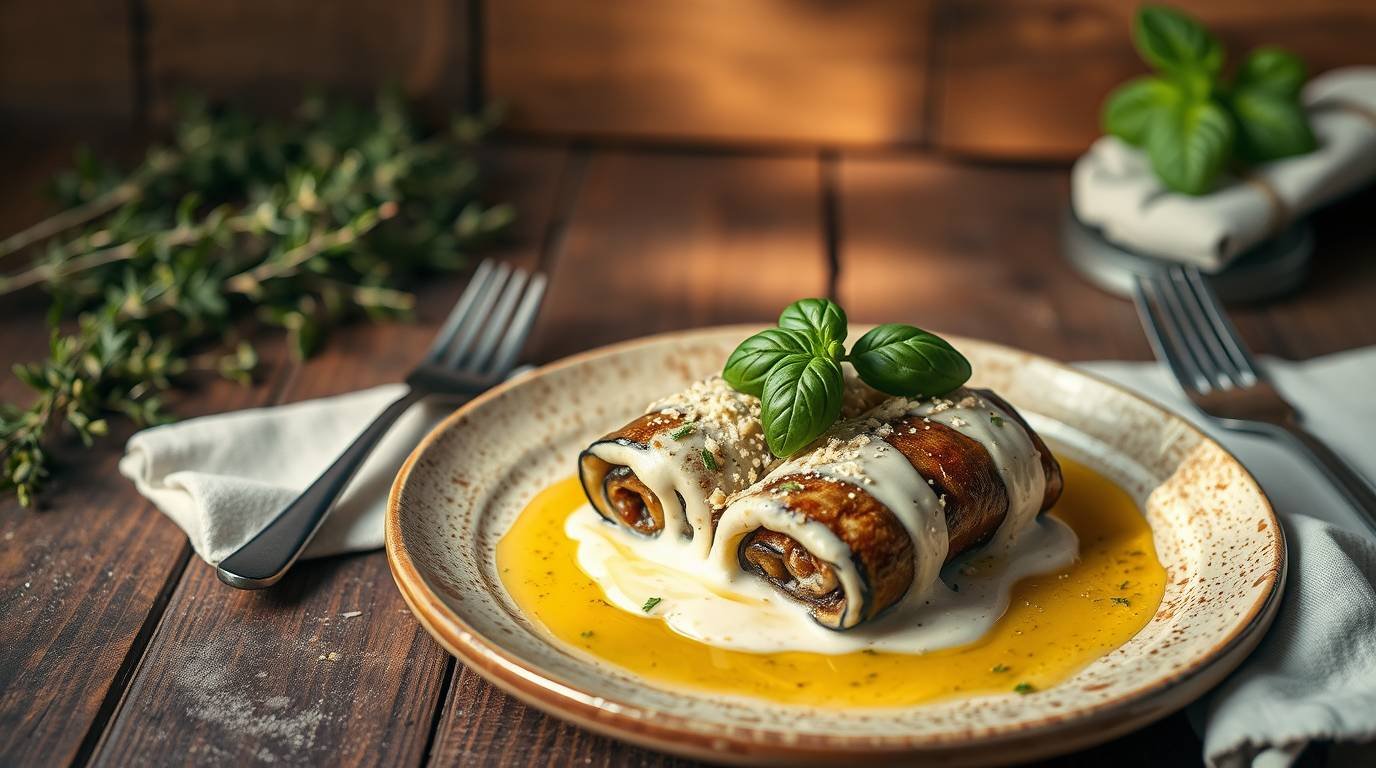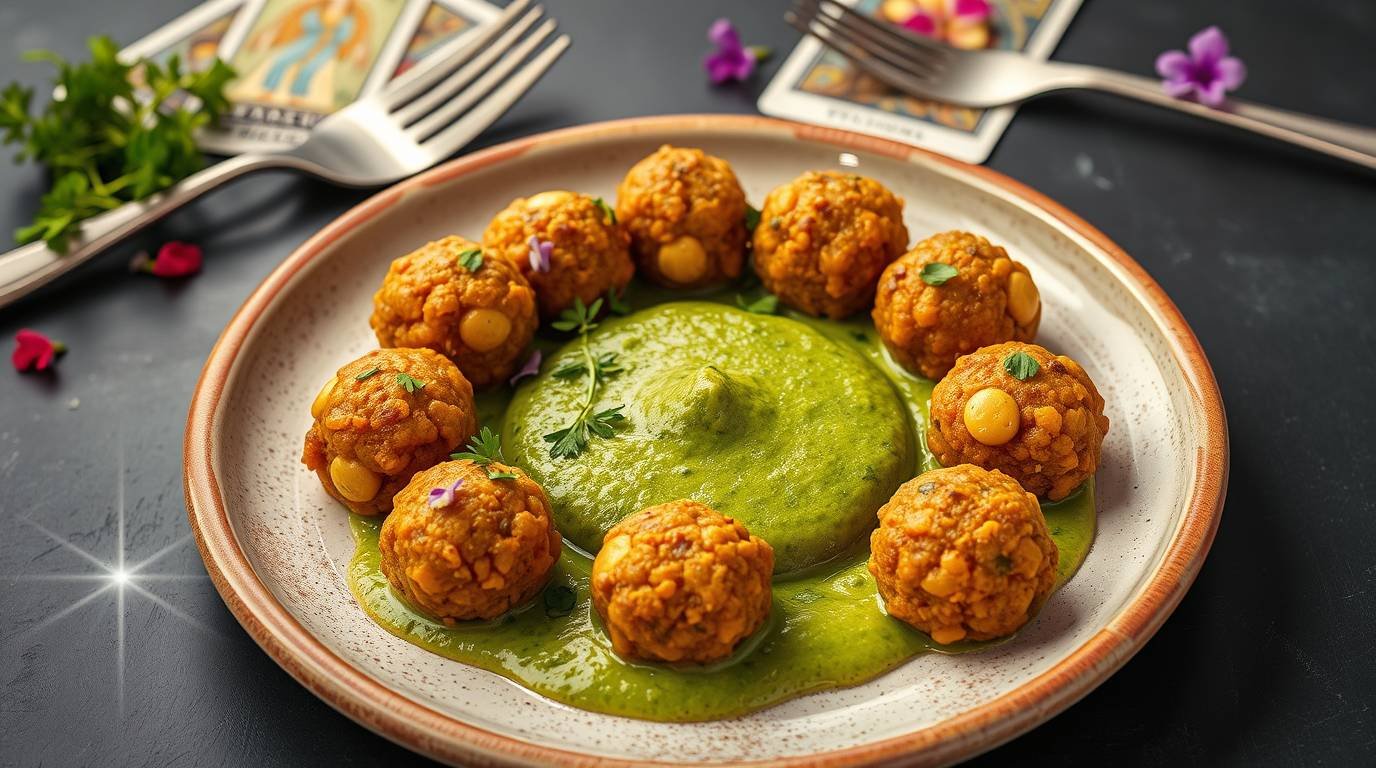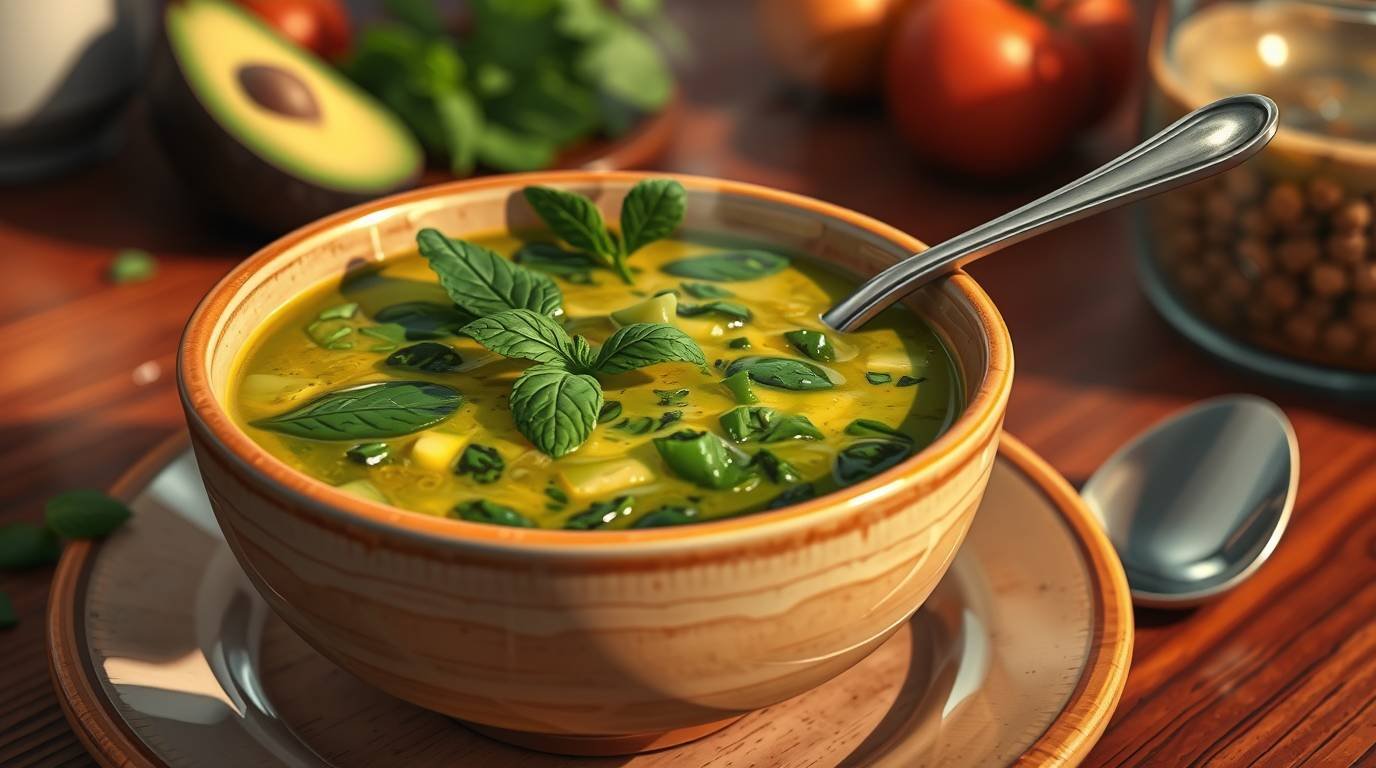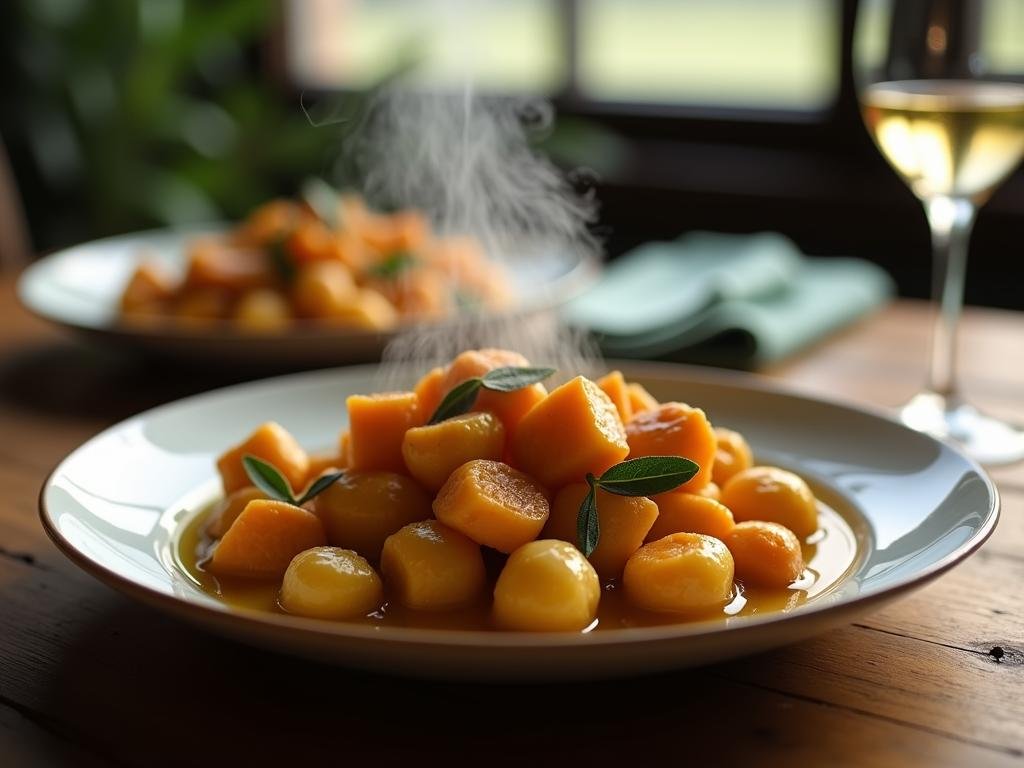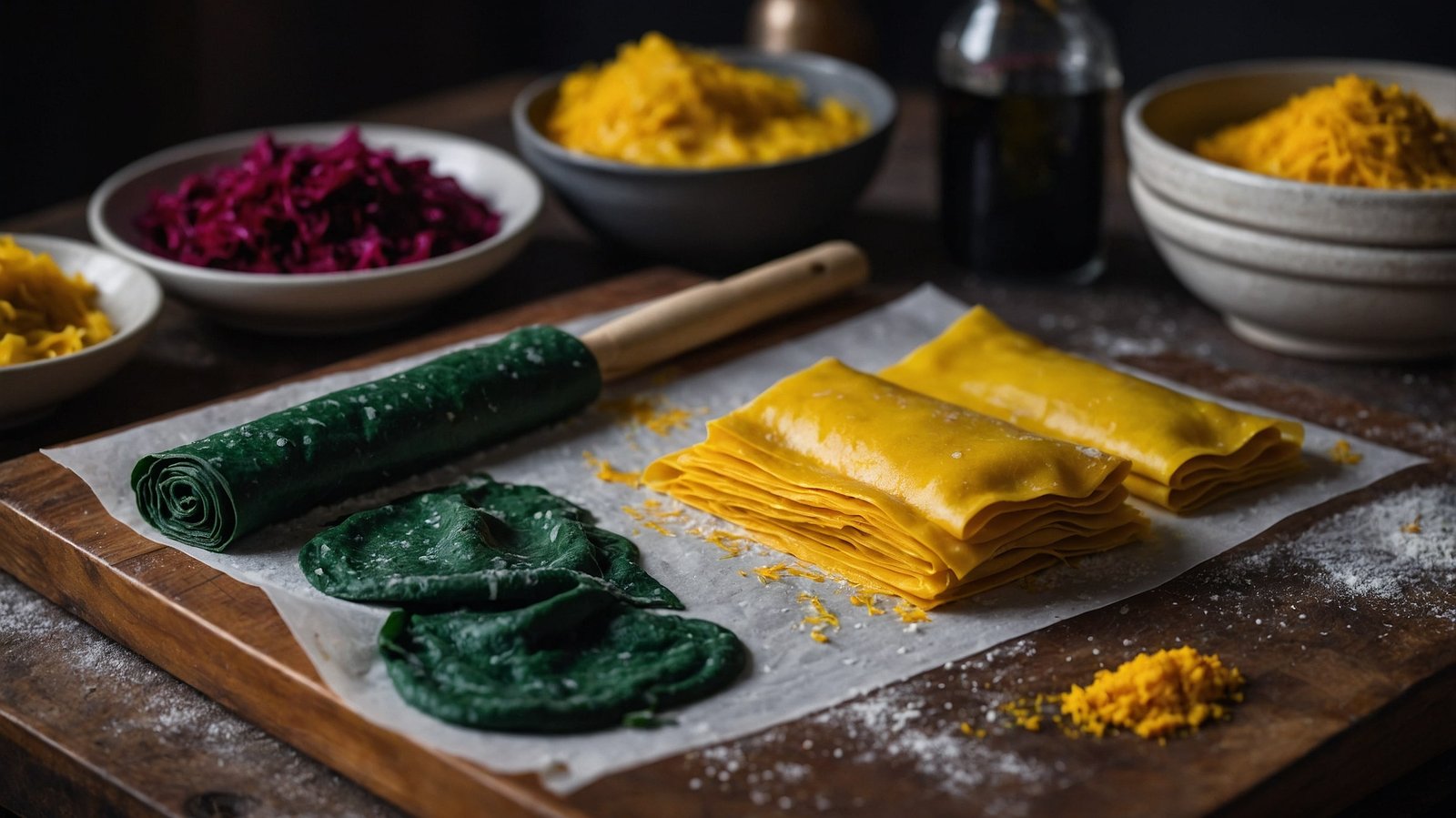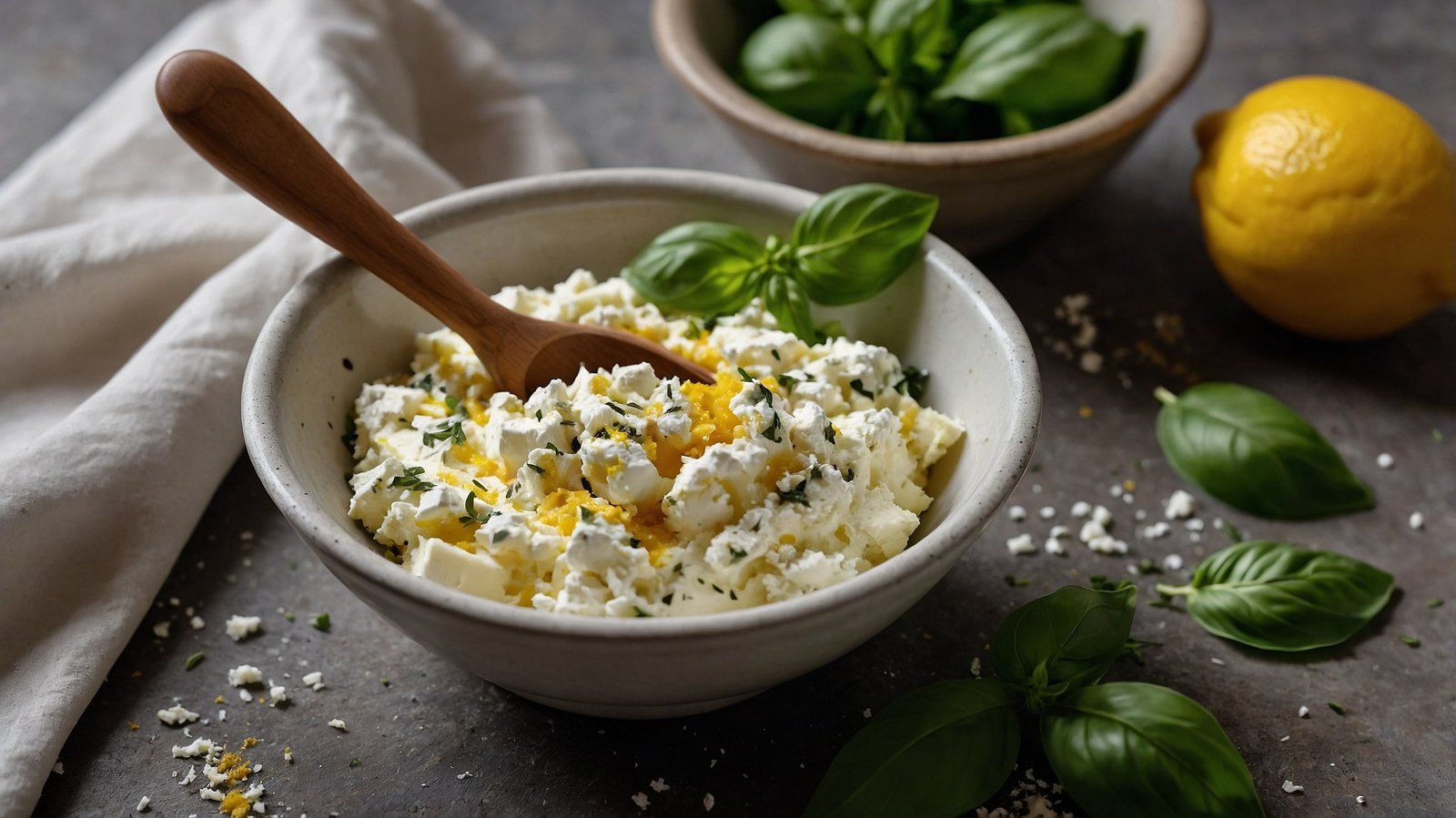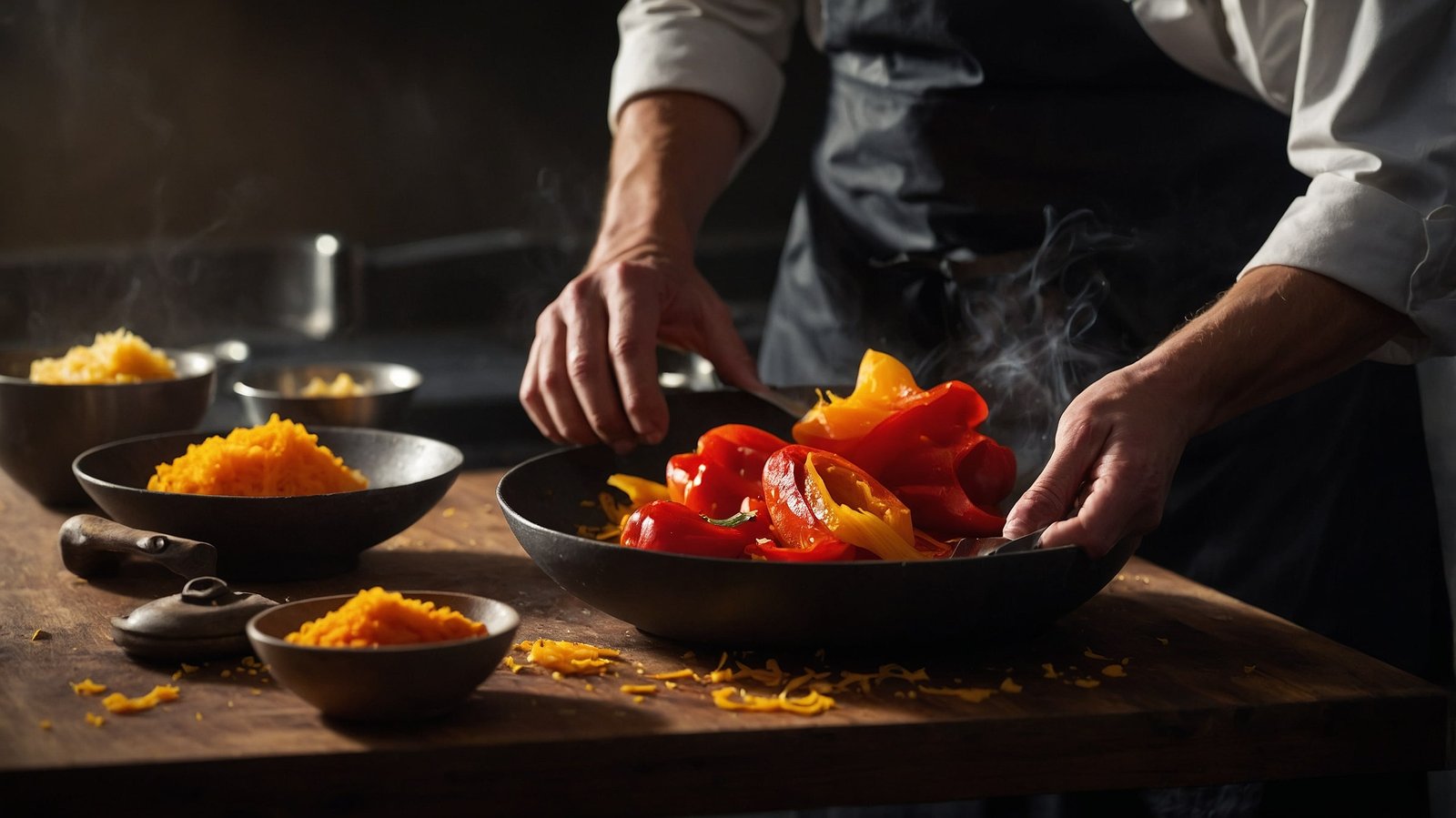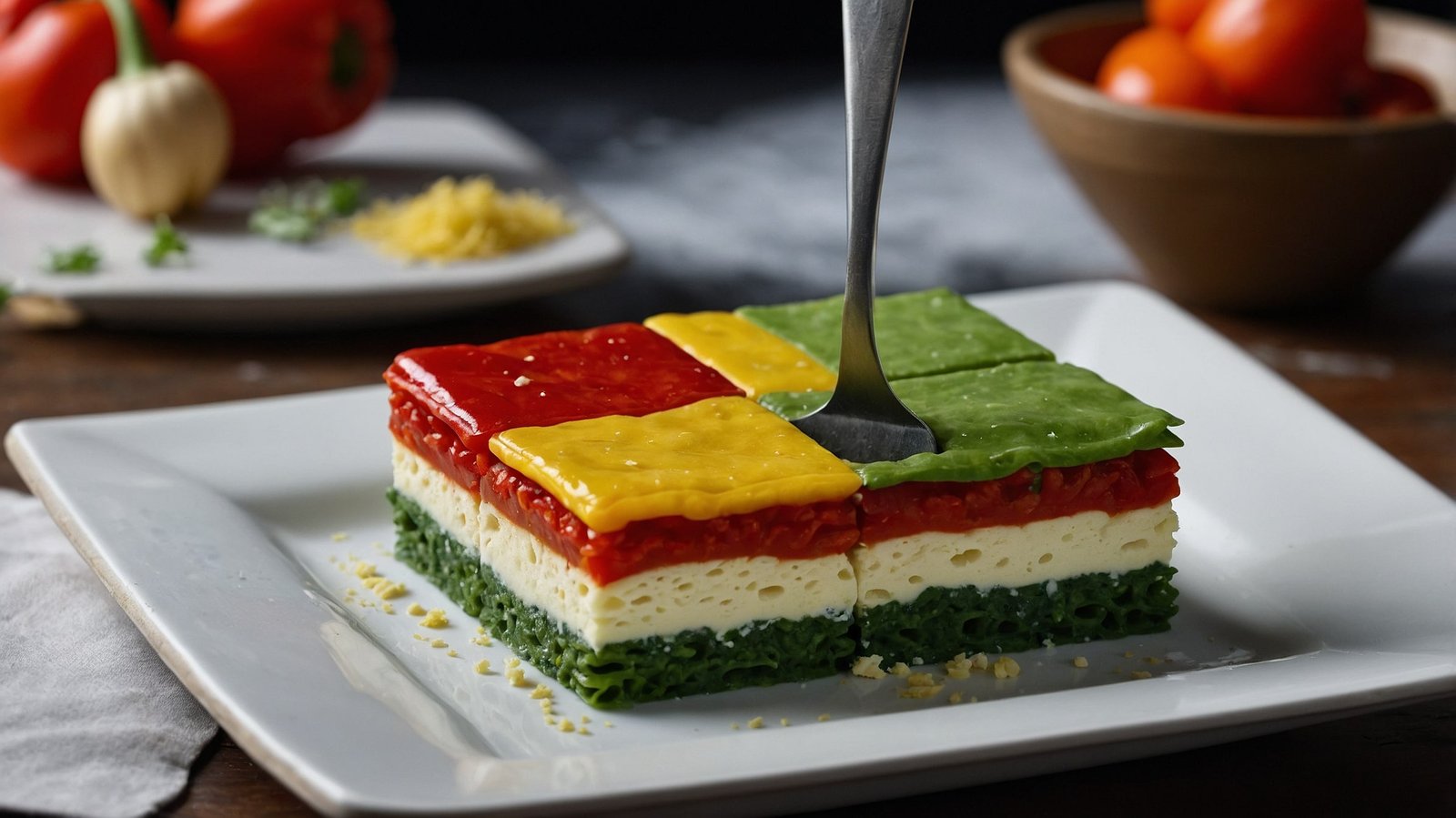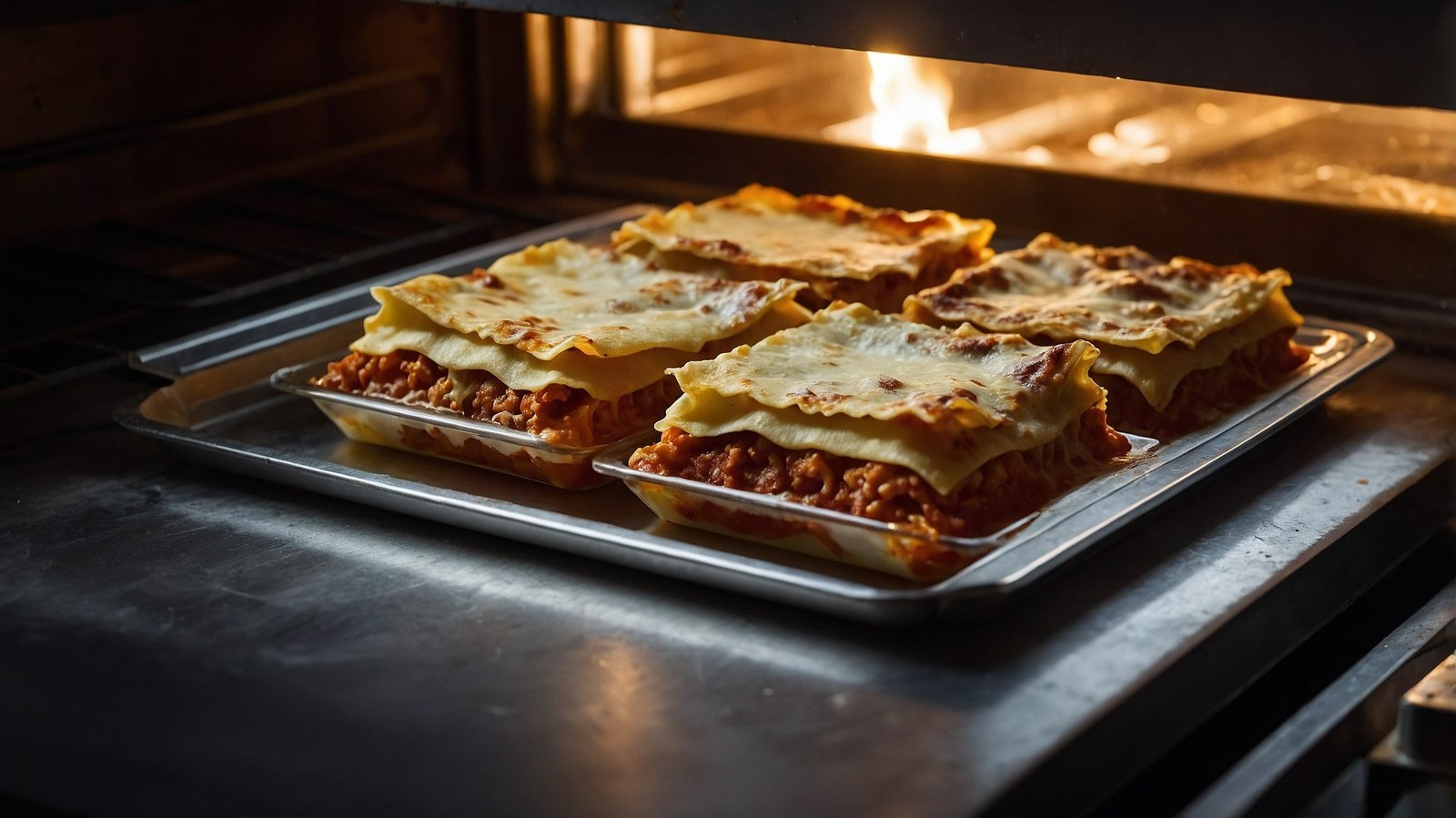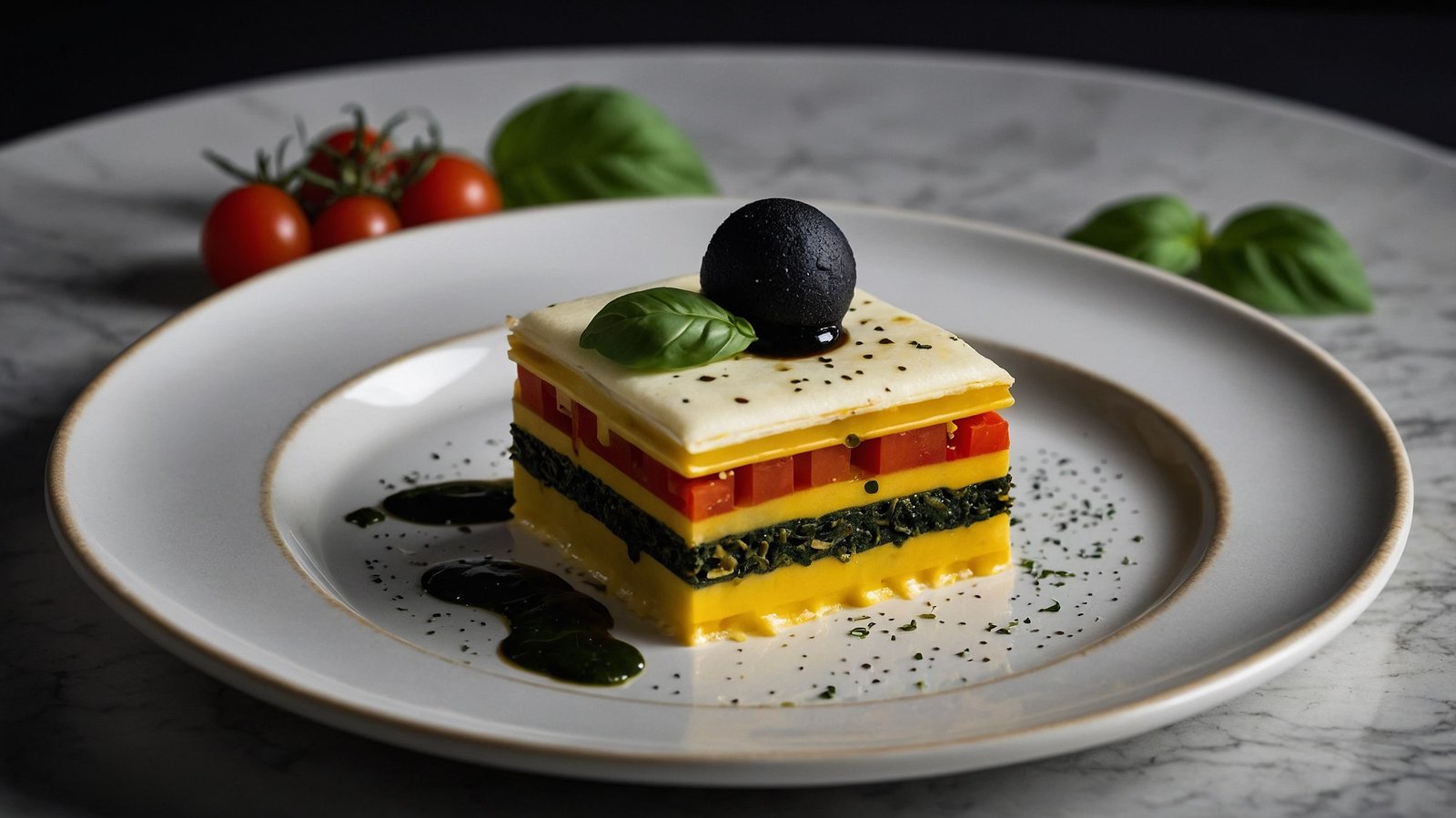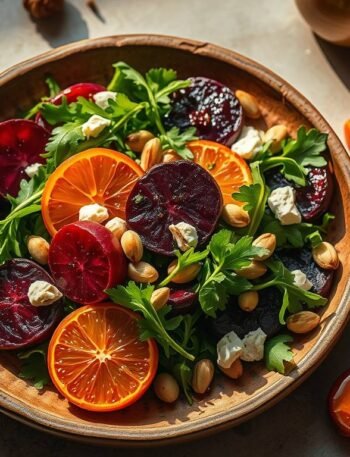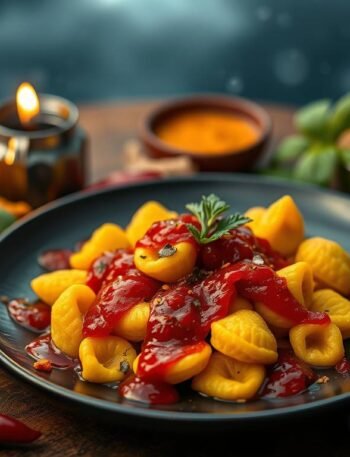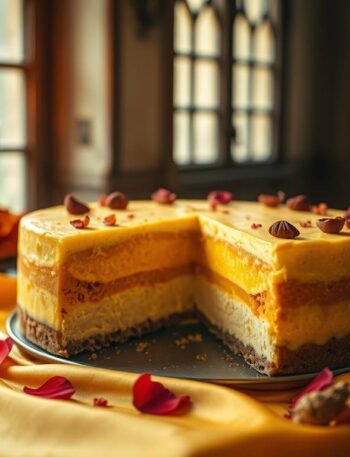Lasagna Inspired by Mondrian: A Four Elements Recipe with Colorful Pasta Layers


Lasagna Inspired by Mondrian is a vibrant and artistic twist on the classic Italian dish, featuring colorful layers of pasta that represent the four elements: earth, water, air, and fire. This culinary masterpiece not only delights the palate but also serves as a feast for the eyes, reminiscent of Piet Mondrian’s iconic geometric paintings. With layers of vivid vegetables, rich cheeses, and savory sauces, this lasagna invites you to explore the harmony between art and gastronomy.
🃏 Tarot Insight
The Three of Pentacles is the guiding card for this dish.
This card is about craftsmanship, collaboration, and structured creativity—perfectly matching the precision and layered artistry of Mondrian Lasagna. Just as the stonemason works under the guidance of an architect, this dish calls on the cook to follow a structured plan with attention to detail, blending skill with inspiration.
Related Recipes1 hr 30 mins Intermediate1 hr 30 mins Intermediate1 hr 30 mins Beginner1 hr 30 mins Intermediate1 hr 30 mins Intermediate1 hr 30 mins Intermediate1 hr 30 mins Intermediate1 hr 30 mins Intermediate
Supporting cards by element:
-
Earth (Green Spinach Pasta): The Empress – nurturing, grounding, lush with life.
-
Water (Ricotta & Zucchini): The High Priestess – intuition, fluidity, inner lightness.
-
Air (Herbs & Spices): The Magician – control of the elements, transformation of ingredients.
-
Fire (Marinara & Balsamic Glaze): The Tower – intensity, boldness, dramatic flavor.
🪄 Magickal Insight
This lasagna is a chaos magickal mandala—constructed through precision, but activated through symbolic intent.
-
The use of color reflects sigil magick—where red (willpower), yellow (joy and clarity), green (abundance), and black (mystery or protection) are not just pigments but energetic frequencies.
-
Preparing this dish can be turned into a ritual for harmony and integration:
-
As you layer each color, mentally invoke the element it represents.
-
Pipe the top balsamic and saffron grid while visualizing your life becoming orderly and vibrant.
-
Say a haiku spell like:
-
🎴
In squares I align,
fire, water, earth, and air—
balance born through taste.
This transforms the act of cooking into a chaotic alignment ritual—disorder into beauty, raw into refined.
🧘 Chakra Insight
Each layer resonates with one of the lower four chakras, stabilizing the base of your energetic body:
-
Root Chakra (Muladhara – Red): Roasted red pepper layer and marinara. Grounds the body, connects you to your survival instincts and stability.
-
Sacral Chakra (Svadhisthana – Orange/Yellow): Ricotta blended with turmeric, saffron sauce. Sparks joy, sensuality, and creativity.
-
Solar Plexus Chakra (Manipura – Yellow): Yellow pasta or squash purée. Enhances willpower, personal confidence, and clarity.
-
Heart Chakra (Anahata – Green): Spinach pasta and fresh herbs. Opens compassion and self-love—cooking as a form of nourishment for the soul.
Eating this dish balances creativity and structure, stimulates self-worth, and helps you embody beauty with intention.
The Artistic Origins of Lasagna
Lasagna, in its most traditional form, hails from the southern regions of Italy, particularly Emilia-Romagna. Its roots can be traced back to ancient times, where the concept of layering pasta with fillings began to evolve. While the classic lasagna is typically rich with béchamel, ragu, and cheese, it has transformed over the years into countless variations that reflect local ingredients, personal preferences, and even culinary trends. This transformation is akin to the evolution of art itself, where new interpretations breathe fresh life into timeless masterpieces.
Piet Mondrian, a Dutch painter known for his abstract works characterized by bold colors and geometric shapes, serves as the inspiration for this artistic adaptation of lasagna. His style, which emphasizes the harmony between elements, resonates deeply with the way we can arrange flavors and textures in our cooking. Just as Mondrian sought to distill art to its purest form, we can simplify and enhance the components of lasagna to create a dish that is both visually and gastronomically stunning.
The Significance of Color and Flavor
The vibrant colors in this lasagna not only captivate the eye but also symbolize the essential elements of our natural world. Each layer is thoughtfully crafted to represent earth, water, air, and fire. The earth is embodied in a rich spinach pasta, representing the lush greenery of nature. The water element is captured through delicate layers of seafood or perhaps a light, refreshing zucchini ribbon, evoking the fluidity of water. Air is represented by a light, airy ricotta and herb filling that brings a sense of lightness to the dish. Lastly, fire is depicted through a bold marinara sauce, rich with spices and flavors that ignite the palate.
The marriage of these colors and flavors creates a culinary experience that is as complex as the elements themselves. The spinach pasta, for instance, offers a subtle earthiness that complements the lightness of the ricotta. Meanwhile, the fiery marinara provides a punch that contrasts beautifully with the delicate seafood or vegetables. This interplay of flavors is what makes this lasagna truly special—each bite is a journey through the elements, crafted with intention and creativity.
Cooking Techniques that Elevate the Dish
Creating a lasagna inspired by Mondrian requires not only careful layering but also some thoughtful cooking techniques that elevate the dish to new heights. Start by making your pasta from scratch, incorporating fresh spinach for that stunning green hue. The process of rolling out the dough can be therapeutic, much like painting on a canvas, where each stroke matters. When layering, be sure to toast your spices in the marinara sauce to unlock their full potential—this simple step adds depth and richness that transforms the overall flavor profile.
Another key technique is the careful assembly of the layers. Rather than simply stacking ingredients, think of it as composing a visual symphony. Each layer should not only taste good together but also create a striking visual impact. Be mindful of how the colors interact with one another; the vibrant green of the spinach pasta against the rich red of the sauce creates a beautiful contrast that echoes Mondrian’s own artistic philosophy.
In conclusion, this lasagna is more than just a meal; it is an invitation to explore the intersection of art and cooking. By embracing the elements—earth, water, air, and fire—you can create a dish that not only satisfies the hunger but also sparks creativity and joy. So roll up your sleeves, gather your ingredients, and let your inner artist shine as you embark on this delicious culinary journey.
Lasagna Inspired by Mondrian: A Four Elements Recipe with Colorful Pasta Layers
Description
This lasagna is a feast for both the eyes and the palate, featuring layers of vibrant pasta and rich fillings. It's a creative dish that transforms a classic into an art piece.
Ingredients
Ingredients for Lasagna Inspired by Mondrian: A Four Elements Recipe with Colorful Pasta Layers
Instructions
Preparing the Colorful Pasta
-
Making the Dough
1. Prepare the Colored Pasta Sheets
If using fresh homemade pasta:
-
Divide dough into four parts.
-
Blend in natural colorants:
-
Green: Spinach purée
-
Red: Beet or tomato purée
-
Yellow: Turmeric
-
Black: Squid ink
-
-
Roll into thin lasagna sheets.
-
Boil each color separately for 1–2 minutes, rinse in cold water, and pat dry.
If using pre-colored dry pasta, cook according to package directions and cool.
For the colors, consider using spinach for green, beetroot for red, and squid ink for black. You can mix a tablespoon of each into the dough before kneading. -
-
Rolling Out the Pasta
2. Create the Ricotta Filling
-
Mix ricotta, Parmesan, salt, pepper, and chopped herbs in a bowl.
-
Add a hint of lemon zest and a pinch of turmeric for color and brightness.
-
Optional: Whip with a fork or food processor for a very smooth, pipeable texture.
Dust the sheets with flour to prevent sticking as you layer them. -
Creating the Filling
-
Making the Ricotta Mixture
3. Roast and Prepare Vegetables
-
Roast red bell pepper until charred, peel and flatten it into a rectangular sheet.
-
Optionally prepare a yellow component:
-
Saffron cream or butternut squash purée blended with a touch of cream.
-
Feel free to add in some sautéed spinach or zucchini for extra nutrition and flavor. -
-
Preparing the Meat Sauce
4. Assemble the Mondrian Lasagna
-
Use a square mold or small ring mold for clean edges.
-
Layer carefully:
-
Bottom layer: Green spinach pasta
-
Second: Ricotta mixture (spread or piped evenly)
-
Third: Yellow or white pasta
-
Fourth: Roasted red bell pepper (flat sheet for red)
-
Top: Brush or pipe black balsamic reduction and yellow saffron cream to mimic Mondrian’s block design.
-
Tip: Use a squeeze bottle or piping bag for clean black and yellow lines on top.
For a richer flavor, add a pinch of sugar to balance the acidity of the tomatoes. -
Assembling the Lasagna
-
Layering the Ingredients
5. Bake
-
Place assembled lasagnas in a greased baking tray (use individual molds if possible).
-
Cover with foil and bake at 375°F (190°C) for 25–30 minutes until heated through.
-
Remove foil for the last 5 minutes to firm the top.
Try to alternate colors for a striking visual effect—think red, green, yellow, and so on! -
-
Topping It Off
6. Plating
-
Gently unmold onto plates.
-
Drizzle balsamic reduction and saffron cream in abstract patterns around the base.
-
Use a clean brush or squeeze bottle to refine the Mondrian-style crosshatch on top.
-
Nutrition Facts
Servings 6
- Amount Per Serving
- Calories 514.96kcal
- % Daily Value *
- Total Fat 20.89g33%
- Saturated Fat 12.14g61%
- Cholesterol 71.41mg24%
- Sodium 1260.15mg53%
- Potassium 677.68mg20%
- Total Carbohydrate 54.97g19%
- Dietary Fiber 4.13g17%
- Sugars 6.5g
- Protein 27.53g56%
- Vitamin A 1777.15 IU
- Vitamin C 73.53 mg
- Calcium 452.78 mg
- Iron 2.45 mg
- Vitamin D 0.32 mcg
- Vitamin E 1.87 mg
- Vitamin K 12.84 mcg
- Thiamin 0.12 mg
- Riboflavin 0.41 mg
- Niacin 2.42 mg
- Vitamin B6 0.37 mg
- Folate 53.28 mcg
- Vitamin B12 0.93 mcg
- Pantothenic Acid 0.92 mg
- Phosphorus 453.9 mg
- Magnesium 73.06 mg
- Zinc 3.4 mg
- Selenium 57.05 mcg
- Copper 0.33 mg
- Manganese 0.78 mg
* Percent Daily Values are based on a 2,000 calorie diet. Your daily value may be higher or lower depending on your calorie needs.
Note
- Use high-quality pasta sheets for the best texture; consider using homemade or fresh pasta for added flavor.
- When layering, alternate colors for a visually striking effect; think red bell pepper, spinach, and butternut squash for vibrant layers.
- Toast the herbs in olive oil before adding to the sauce to enhance their flavors.
- For a creamier texture, add a layer of ricotta mixed with a bit of lemon zest and a pinch of nutmeg.
- Allow the lasagna to rest for at least 15-20 minutes before slicing; this will help the layers hold together beautifully.
- Experiment with different cheeses; a blend of mozzarella, fontina, and a sprinkle of aged parmesan can elevate the flavor profile.
- Consider using a béchamel sauce for a rich, creamy layer to complement the tomato sauce.
- For a gluten-free option, use vegetable slices like zucchini or eggplant instead of pasta.
- Store leftovers in an airtight container in the refrigerator for up to 3 days; reheat in the oven for best results.
- Pair with a light salad dressed with lemon vinaigrette to balance the richness of the lasagna.
Embracing the Experience
A Symphony of Flavors
Lasagna Inspired by Mondrian is not just a meal; it’s an experience that delights the senses. Each layer, vibrant and distinct, tells a story of balance and harmony, reminiscent of Mondrian’s masterpieces. The rich, savory notes of the herb-infused ricotta meld beautifully with the robust marinara, while the colorful vegetable layers add a fresh crunch that dances on the palate. This dish is a celebration of flavor, texture, and art, inviting you to savor every bite as if it were a brushstroke on a canvas.
Memorable Moments
I fondly recall the first time I made this dish for a gathering of friends. As I pulled the lasagna from the oven, the aroma filled the kitchen, and my guests gathered in anticipation, drawn in by the vibrant colors. It became a centerpiece of conversation, with everyone eagerly diving in and sharing their thoughts. It’s these moments—of connection, laughter, and shared enjoyment—that make cooking so rewarding.
Serving Suggestions and Storage Tips
For serving, consider pairing your lasagna with a crisp side salad sprinkled with a zesty vinaigrette to balance the richness of the dish. It’s also delightful with a simple garlic bread, perfect for soaking up any leftover sauce. If you find yourself with leftovers, which is often the case with a dish this enticing, they can be stored in an airtight container in the refrigerator for up to three days. Simply reheat in the oven to maintain that perfect layer of cheesy goodness.
Encouragement to Create
I encourage you to try this recipe and make it your own. Feel free to experiment with different vegetables, cheeses, or even sauces to suit your taste. Cooking is an art, and just like Mondrian, you have the freedom to create your own masterpiece. I’d love to hear about your experiences—what twists you added, how it turned out, or any questions you may have. Let’s share our culinary journeys and inspire one another in this beautiful world of cooking!
Tag tarot_mistical_lab/ if you made this recipe.
Frequently Asked Questions
How can I store the leftovers?
Leftovers can be stored in an airtight container in the fridge for up to 4 days. Reheat in the oven or microwave until thoroughly heated.
Can I substitute an ingredient?
Absolutely! You can swap out the ricotta for cottage cheese or use zucchini slices instead of pasta for a gluten-free version.
What should I serve this with?
A simple side salad with a tangy vinaigrette pairs beautifully, or you could serve it with garlic bread for a comforting touch.
How long does it take to prepare the dish?
Preparation takes about 30 minutes, and baking it will take around 45 minutes, so plan for about an hour and 15 minutes total.
Can I freeze the lasagna?
Yes, you can freeze it before baking! Just wrap it tightly in plastic wrap and foil. It will keep well for up to 3 months.
Hello, beautiful people! I am Marco DeLuca, Mystic Chef.
Master Chef • Tarot Grandmaster • Rune Caster
Crafting recipes that blend magick, flavor, and soul.
You may also like...


Easy and Authentic Vegetarian Pho Recipe


Korean-Inspired Vegan Bibimbap: A Bowl of Balance and Bold Flavor




